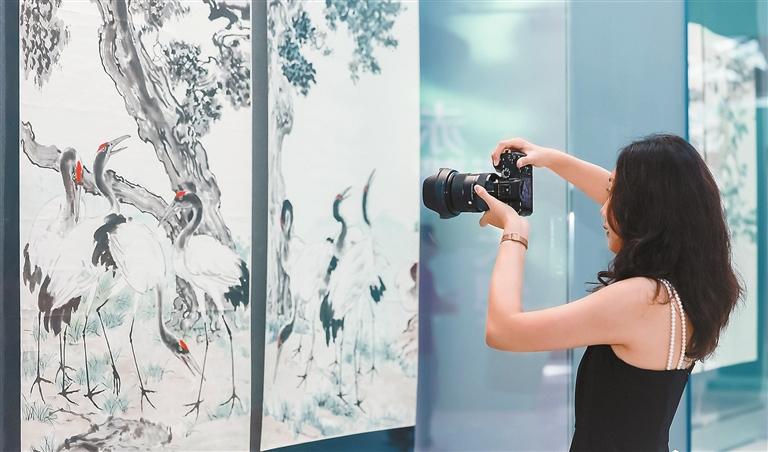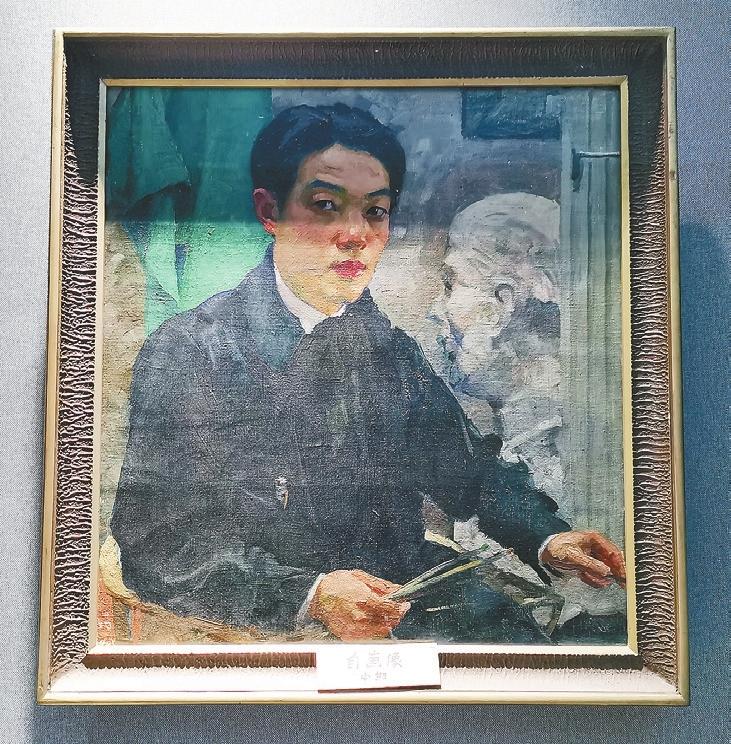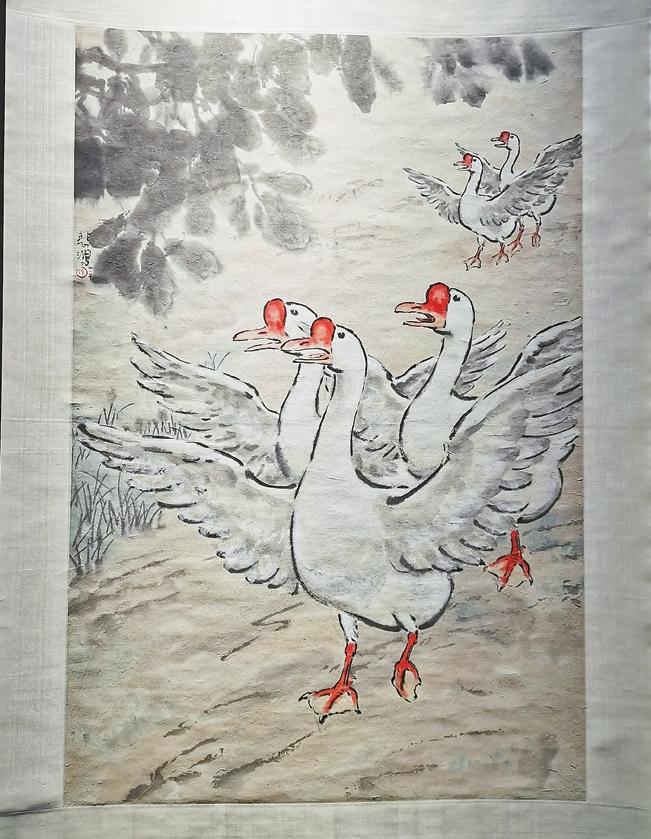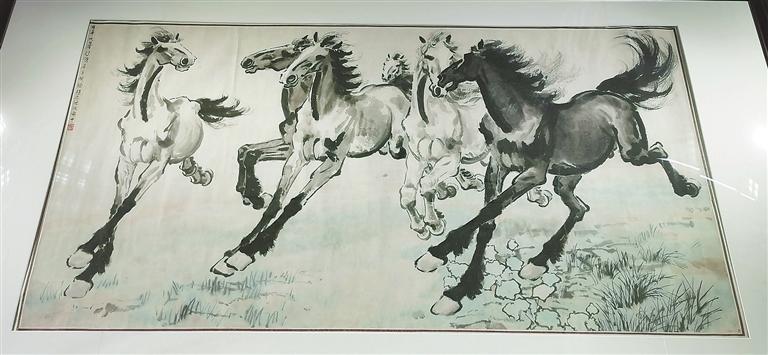



Cao Zhen caozhen0806@126.com LOCALS are having a rare opportunity to admire more than 80 masterpieces created by Xu Beihong (1895-1953) in the 1920s through the 1940s at an exhibition at the Shenzhen Museum of Contemporary Art and Urban Planning (MoCAUP). As visitors enter the exhibition hall, they will be drawn to the magnificence and timeless allure of Xu’s masterpieces, especially his horse paintings that skillfully capture the dynamic nature of horses. Xu portrayed them in motion, capturing their energy and grace. When observing the paintings, the horses’ muscular strength and dynamic poses elicit a profound sense of life and spirit. Xu seamlessly fuses the fluidity of Chinese ink painting with the realistic rendering inspired by Western composition, resulting in a unique artistic style. Horses in Chinese culture symbolize such virtues as strength, courage and freedom, and Xu expressed these in his paintings. “Horses in his paintings represent the spirit of the era — ceaseless galloping. He portrayed the horses which are always pursuing brightness and freedom, and forever moving forward. The hoofbeats could shatter the silence of the world,” said Xu Qingping, a son of Xu Beihong, at the exhibition opening ceremony Aug. 21. “Horses in his paintings are full of passion, full of ideals, full of upbeat spirit. They are not only horse images, but also the images of the nation and the era, as well as the painter’s inner voice,” said Xu Qingping, also an established painter and director of the Xu Beihong Memorial Hall in Beijing. At this grand exhibition, visitors can admire Xu Beihong’s Chinese paintings, oil paintings, watercolors, sketches and calligraphic works covering a wide range of subjects. One painting depicting a wounded lion was created in 1938 during the wartime. With its piercing gaze, the wounded yet fiercely determined lion symbolizes the plight of China during that era, preparing for battle with unwavering strength and resilience. Xu expressed his patriotic concern for the nation, aiming to awaken the consciousness of his fellow countrymen. This masterpiece, combining romanticism and realism, not only left an indelible impact on people during the wartime but also continues to convey patriotism for present and future generations. Xu is widely regarded as one of the pioneers of modern Chinese painting. Born in Jiangsu Province, he studied traditional Chinese painting during his childhood, followed by fine art in Japan, and oil painting and sketching in France. He later adopted a new artistic approach that merged the essence of traditional Chinese painting with Western realism techniques. Beyond his artistic achievements, Xu also made significant contributions as an art educator and advocate for artistic reform in China. He played a crucial role in guiding and nurturing younger generations of artists, emphasizing the importance of sketching and overall artistic ability. “Master Xu’s artistic philosophy of ‘reaching the vast while grasping the minute details’ has been continuously inspiring generations of artists and art enthusiasts. This philosophy also stimulates our contemplation of Shenzhen’s future cultural development. … Let’s explore classic Chinese art in the early 20th century [through this exhibition] and the unique path that our predecessors paved for Chinese art,” said Yan Weixin, director of the MoCAUP. Dates: Through Nov. 12 Hours: 10 a.m.-6 p.m., closed Mondays Tickets: 75 yuan (various discounts available) Booking: WeChat account “深圳市当代艺术与城市规划馆” Venue: Shenzhen Museum of Contemporary Art and Urban Planning, Futian District (深圳市当代艺术与城市规划馆) Metro: Line 3 or 4 to Children’s Palace Station (少年宫站), Exit A2 | 
